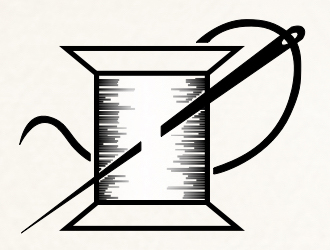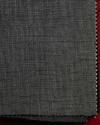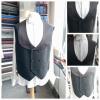Wool Fabric Textures

WOOL
Most of the fabric a customer will encounter when ordering a bespoke suit are made from wool, but other fabric options include cotton, linen and luxury fibres like cashmere, vicuna, silk and mohair. Once you have an idea of what you are interested in, it’s best to trust your gut instinct because there are no hard-and-fast rules. Most importantly you should select a fabric you will feel comfortable in and enjoy wearing. Mueser once said ‘Oftentimes there is no right or wrong, they’re just different options’.
Wool yarn comes mainly from the fleece of sheep. Suiting fabrics made from wool are broken into two categories: worsted and woollen.
Worsted fabrics are combed to remove any short fibres before spinning, leaving longer strands which generally produce a smoother, stronger yarn. Woollen fabrics on the other hand aren’t combed before spinning. Most of the stuff you look at in a Tailor shop will be worsted wool.
How the yarns are woven produces different fabric textures and patterns. Some common types you will encounter are checks, pinstripes, plaids, houndstooth and herringbone amongst others. Some other common types of fabric are flannel (a woollen fabric with a softer face), and tweed (a traditional Scottish and Irish woollen fabric).
A customer will often see Super numbers attached to denote micron counts (e.g. Super 100s, Super 140s etc). The higher the micron count, the finer the diameter of fibre staple – this leads to a softer fabric with more drape. Fabrics with higher Super numbers are often very luxurious but may not necessarily be better (often they wear out faster).
We will comment on luxury fibres in our next blog. Take care until then.
Links we like:-
https://www.hfwltd.com/uses-for-wool-cloth.html









